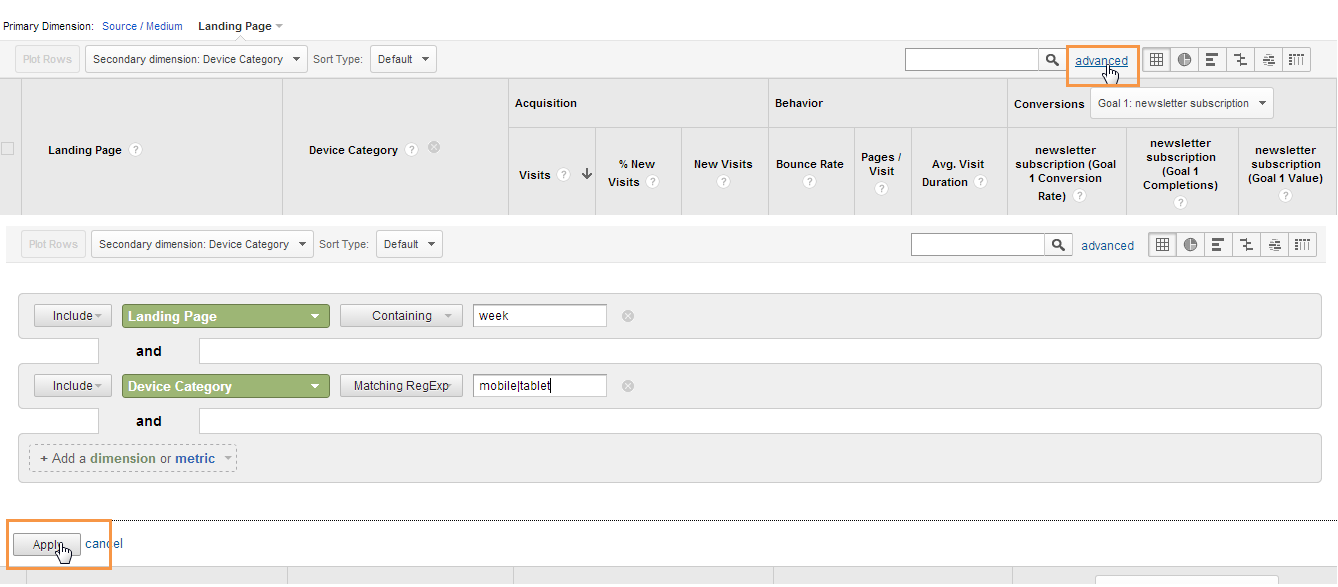Google Analytics Mastery: Revealing the Potential of Secondary Dimension
Google Analytics Mastery: Revealing the Potential of Secondary Dimension
Blog Article
Unlocking the Power of Secondary Dimension Analytics for Enhanced Information Insights and Decision-Making
In the world of information analytics, main dimensions often take the limelight, yet the real depth of insights lies within the world of second measurements. By taking advantage of the power of second dimension analytics, organizations can unveil hidden trends, uncover correlations, and remove a lot more significant final thoughts from their data.
Importance of Second Measurements
Checking out the importance of additional dimensions in analytics introduces the concealed layers of data understandings critical for notified decision-making in various domain names. Additional dimensions offer a much deeper understanding of main data by supplying added context and perspectives. By including additional dimensions right into analytics, organizations can extract a lot more nuanced and detailed understandings from their datasets.
One secret importance of additional dimensions is their capability to segment and categorize primary information, permitting a more in-depth analysis of certain subsets within a dataset. When looking at the data as a whole, this division makes it possible for companies to recognize patterns, patterns, and outliers that might not be evident. Secondary dimensions aid in uncovering connections and reliances in between different variables, leading to even more exact projecting and predictive modeling - secondary dimension.
Additionally, additional measurements play an essential function in improving information visualization and coverage. By adding additional measurements to visualizations, such as charts or graphes, analysts can create much more interesting and informative representations of information, promoting far better interaction of searchings for to stakeholders. Overall, the integration of secondary measurements in analytics is crucial in opening the complete potential of information and driving evidence-based decision-making.
Trick Benefits of Using Additional Dimensions
Utilizing additional measurements in analytics supplies organizations a calculated advantage by increasing the depth and granularity of data insights. One key benefit of including secondary dimensions is the capacity to sector and filter information, permitting a much more comprehensive analysis of specific facets within a dataset. This division makes it possible for companies to obtain a much more nuanced understanding of their audience, performance metrics, and various other critical information points. By dissecting information using secondary measurements such as time, place, device kind, or customer demographics, organizations can uncover patterns, fads, and connections that may or else continue to be surprise.
In addition, the usage of additional measurements boosts the context in which primary data is translated. By leveraging additional measurements in analytics, companies can harness the complete capacity of their information to drive far better decision-making and achieve their company goals.
Advanced Data Evaluation Methods
A deep dive right into innovative information evaluation techniques exposes advanced techniques for removing beneficial understandings from intricate datasets. One such strategy is machine learning, where algorithms are employed to determine patterns within data, anticipate results, and make data-driven decisions. This technique enables the automation of analytical model building, enabling the handling of huge quantities of information at a quicker speed than conventional techniques.
Another advanced technique is anticipating analytics, which makes use of analytical algorithms and artificial intelligence strategies to anticipate future results based on historic information. By examining patterns and trends, businesses can prepare for customer behavior, market trends, and potential threats, equipping them to make aggressive decisions.
Moreover, text mining and sentiment evaluation are important techniques for removing understandings from unstructured information sources such as social media remarks, customer evaluations, and survey reactions. By assessing text data, organizations can recognize client opinions, recognize emerging fads, and improve their products or solutions based upon comments.
Enhancing Decision-Making Via Second Measurements

Enhancing Get More Info decision-making with secondary dimensions makes it possible for businesses to make more educated and targeted strategic options. By segmenting customer information based on additional measurements like acquiring history or engagement levels, business can tailor their advertising approaches to details audience segments, leading to improved conversion rates and client fulfillment. In addition, second measurements can aid recognize relationships and partnerships in between various variables, making it possible for companies to make data-driven decisions that drive development and profitability.
Executing Additional Dimension Analytics
When incorporating secondary measurements in analytics, companies can unlock deeper insights that drive critical decision-making and boost general performance. Carrying out additional dimension analytics requires an organized technique to guarantee effective application of this effective tool. The very first step is to determine the essential metrics and measurements that straighten with the organization's critical objectives. This entails understanding the details inquiries the organization looks for to respond to and the data factors needed to resolve them.

Moreover, organizations ought to utilize advanced analytics devices and modern technologies to enhance the process of integrating second dimensions. These tools can automate information processing, analysis, and visualization, enabling companies to concentrate on translating understandings instead of hands-on information manipulation.
Final Thought
In verdict, secondary dimension analytics play a critical role in improving information understandings and decision-making procedures. By utilizing sophisticated information evaluation strategies and implementing additional measurements efficiently, organizations can unlock the power of their information to drive critical business decisions. The essential benefits of using additional dimensions can not be overemphasized, as they give a much deeper understanding check out here of data trends and partnerships. It is crucial for organizations to leverage secondary measurement analytics to stay affordable in today's data-driven landscape.
In the realm of data analytics, main measurements usually take the limelight, yet the true deepness of understandings lies within the realm of second measurements.Using additional measurements in analytics provides organizations a strategic advantage by increasing the depth and granularity of data understandings. By leveraging second measurements in analytics, organizations can harness the complete possibility of their data to drive better decision-making and attain their organization goals.
Implementing information recognition procedures and routine audits can assist preserve information high quality and reliability.
By utilizing innovative information analysis techniques and executing secondary dimensions effectively, organizations can open the power of their data to drive strategic organization decisions.
Report this page